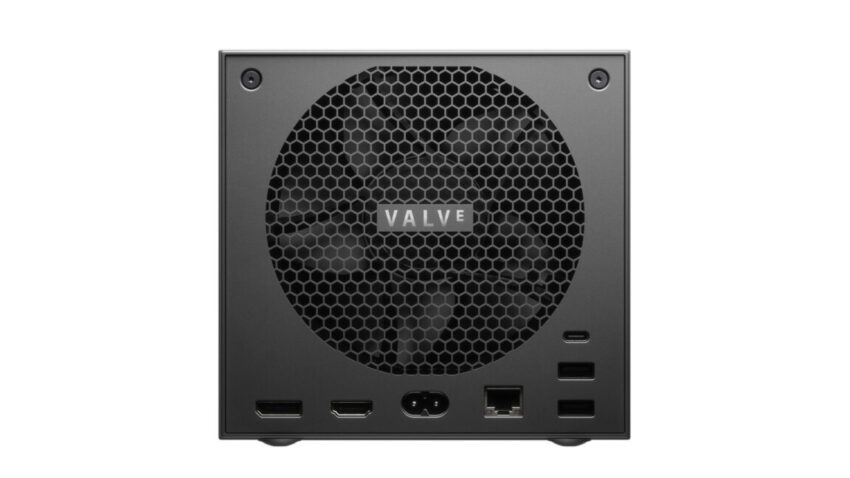
valve s steam machine looks like a Valve has clarified its pricing strategy for the upcoming Steam Machine, indicating that it will not adopt a loss leader model typical of traditional consoles.
valve s steam machine looks like a
Introduction to the Steam Machine
Valve Corporation, known for its influential role in the gaming industry, recently announced its new product, the Steam Machine. This living room box is designed to bridge the gap between PC gaming and console accessibility. With the gaming landscape evolving rapidly, Valve aims to capture a segment of the market that desires the flexibility of PC gaming without the complexity often associated with building or maintaining a gaming rig.
Pricing Strategy: A Departure from Conventional Models
In a recent interview with the YouTube channel Skill Up, Valve’s Pierre-Loup Griffais addressed the pricing strategy for the Steam Machine. Analysts had speculated that Valve might adopt a loss leader pricing model, which is common in the console market. This approach involves selling hardware at a loss to encourage software sales, ultimately leading to greater revenue through game purchases and subscriptions. However, Griffais dismissed this notion, stating that the Steam Machine’s pricing would align more closely with current PC market standards.
Understanding Loss Leader Pricing
The loss leader pricing strategy has been a hallmark of console manufacturers for years. Companies like Sony and Microsoft often sell their consoles at a reduced price, accepting initial losses with the expectation that customers will spend more on games and services over time. This model has proven effective in establishing a large user base, which in turn drives software sales. However, Griffais emphasized that Valve’s approach would differ significantly.
Market Positioning of the Steam Machine
Griffais explained that the Steam Machine is designed to offer performance that exceeds the bottom 70 percent of machines that participate in Valve’s regular hardware survey. This positioning suggests that the Steam Machine will not only compete with entry-level gaming PCs but also provide a robust alternative for gamers seeking a more powerful experience without the hassle of building a custom rig.
Performance Specifications
The Steam Machine will feature an AMD Zen 4 CPU and an RDNA3 GPU, components that are expected to deliver high-performance gaming experiences. These specifications indicate that the Steam Machine is tailored for gamers who demand quality graphics and responsive gameplay. Griffais noted that consumers could expect to pay a price comparable to that of desktop hardware with similar specifications.
Consumer Expectations and Market Implications
As Valve prepares to launch the Steam Machine, consumer expectations will play a crucial role in its success. Gamers are increasingly discerning about the value they receive for their investments, particularly as the market becomes saturated with various gaming options. The Steam Machine’s pricing strategy will need to reflect not only the performance capabilities but also the overall gaming ecosystem that Valve offers through its Steam platform.
Building a Competitive Ecosystem
Valve’s decision to avoid a loss leader pricing model may stem from its desire to create a sustainable ecosystem around the Steam Machine. By aligning the pricing with current PC market standards, Valve can ensure that the hardware remains profitable while still providing value to consumers. This approach may also encourage developers to create games optimized for the Steam Machine, further enhancing its appeal.
Potential Challenges Ahead
Despite the promising specifications and strategic pricing, the Steam Machine will face several challenges in the competitive gaming landscape. The console market is dominated by established players, and breaking into this space requires not only a compelling product but also effective marketing and community engagement. Valve must communicate the unique advantages of the Steam Machine to potential customers, emphasizing its performance, ease of use, and integration with the Steam ecosystem.
Stakeholder Reactions
The announcement of the Steam Machine has elicited a range of reactions from stakeholders in the gaming industry. Analysts and consumers alike are keenly interested in how Valve’s new offering will impact the market dynamics. Some industry experts have expressed skepticism about Valve’s ability to compete with established consoles, while others see potential for innovation in the gaming space.
Industry Analysts Weigh In
Industry analysts have been vocal about their expectations for the Steam Machine. Many believe that Valve’s established reputation in the gaming community could work in its favor. The company’s success with the Steam platform has created a loyal user base, and the introduction of the Steam Machine could leverage that loyalty. However, analysts also caution that the gaming market is highly competitive, and Valve must differentiate its product effectively.
Consumer Sentiment
Consumer sentiment regarding the Steam Machine has been mixed. While some gamers are excited about the prospect of a new gaming device that offers the flexibility of PC gaming, others are wary of the pricing strategy. The expectation of a console-like price point is prevalent among consumers, and the realization that the Steam Machine will not follow this model may lead to disappointment for some. Valve will need to manage these expectations carefully and communicate the value proposition clearly.
Conclusion: The Future of the Steam Machine
As Valve moves closer to the launch of the Steam Machine, the gaming community is watching closely. The company’s decision to avoid a loss leader pricing model and align with the current PC market could set a new precedent for how gaming hardware is priced and marketed. The Steam Machine’s success will depend on its ability to deliver on performance promises while also fostering a vibrant gaming ecosystem.
Ultimately, the Steam Machine represents a bold step for Valve as it seeks to redefine the gaming experience in the living room. By focusing on quality hardware and a competitive pricing strategy, Valve aims to carve out a niche in a crowded market. The coming months will be critical as the company prepares for launch and engages with consumers to build excitement around this innovative product.
Source: Original report
Was this helpful?
Last Modified: November 25, 2025 at 11:37 pm
1 views















